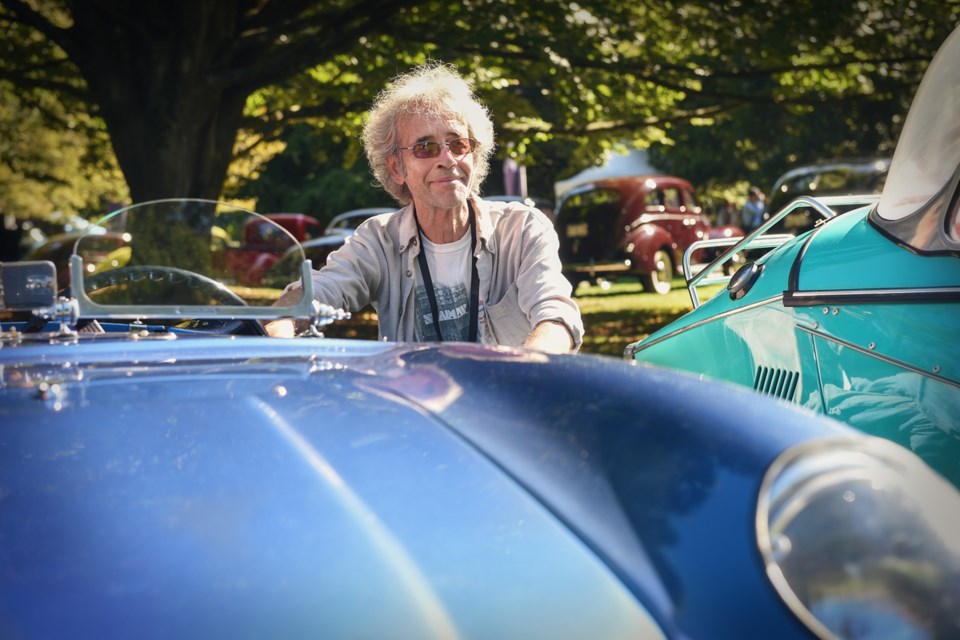Listing every type of car that gleamed on the greens of the VanDusen Botanical Garden as part of the Luxury and Supercar weekend would take up the allotted space for this article.
Most of the machines on display would be a natural part of any James Bond movie, including the world’s fastest snowmobile — appropriately called the SPECTRE. The supercars, usually flanked by local models who took four-hour shifts, included LaFerrari and Ferrari 488, a Lamborghini Huracán, the Canadian race car Magnum Mk5 and the Pagani Huayra, “Ella,” which looked like it had been paused as it folded between car and Transformer.
At the McLaren tent, famed auto designer Frank Stephenson, noted for bringing the Mini Cooper back to modern times, chatted to passersby while �鶹��ýӳ��sales executive for the British automotive company Michael Friskey answered questions about just how prevalent luxury cars are in this city.
“I believe �鶹��ýӳ��has the most super cars per capita in the world,” said Friskey.
“It’s not your imagination and it’s not the imagination of everybody I talk to who says, ‘I turn this way, I turn that way and I see a Ferrari, I see a Lamborghini, I see a McLaren.’ I think it’s because of the growth in Vancouver. Real estate went up in price and people are getting a lot of equity out of their houses.”
The entry level McLaren is $219,500, a price tag for a car that, if you live in Vancouver, is less expensive and only slightly less roomy than most condos.
“I think that if you can afford to drive it, you should drive it,” Friskey added. “Because you deserve the finer things in life.”
At the other side of the gardens, across from a glorious collection of pristine Ford Thunderbirds that ranged from the years 1955 to 2005, was a pod of vintage microcars.
There was nary a model in site, but the history of the machines — both individually as well as the companies that made them — was enough to draw in a crowd.
David Ledlin, a restorer of vintage cars and motorcycles, showed off his latest client project — a 1959 denim blue Berkeley B90 sports coup, one of 666 produced. It was discovered sitting in a field in Surrey, where it had been languishing for decades.
“Fortunately, the engine was out of it and in a little shed,” said Ledlin, who restored a 1932 Ford when he was just 13 years old. “There was damage to the shell — everywhere from sitting out in the weather for 35 years.”
Next to the Berkeley was a cheery mint-green 1959 Messerschmitt that looked like it belonged on a sci-fi movie poster of the same era. Messerschmitt was a German aircraft manufacturing company that designed many planes during the Second World War and, when the war ended and military demand had all but ceased, went into car manufacturing.
“What is it like to drive? I would say probably pretty frightening!” said John Picard, who didn’t have any of his own collection of European cars in the show but came along anyway to help out his friends who did.
Picard, who referred to the microcars as “devices,” admitted he was more interested in the older cars than the newer ones scattered about the gardens.
“After the 1991 models, I don’t think about cars much. It’s not so much about the style but, you’ll be hearing about OBD1 and OBD2 and those are the little computers that are in cars,” he said, referring to on-board diagnostics.
“In 1992, it starts with OBD2 and that’s theoretically when they can shut the car off by remote control and that’s when the car decides for itself what it wants to do. 1991 is the cut-off really for us dinosaurs.”
By that measure, Dave Walker is from the Carboniferous period.
Walker drove his beautiful right-hand drive 1929 Austin Seven over the Oak Street Bridge to the Luxury and Supercar Weekend after receiving an invitation from the show’s organizer.
“This is what I didn’t understand,” he said, laughing. “I didn’t fit into ‘Super’ or ‘Luxury.’”
@rebeccablissett



